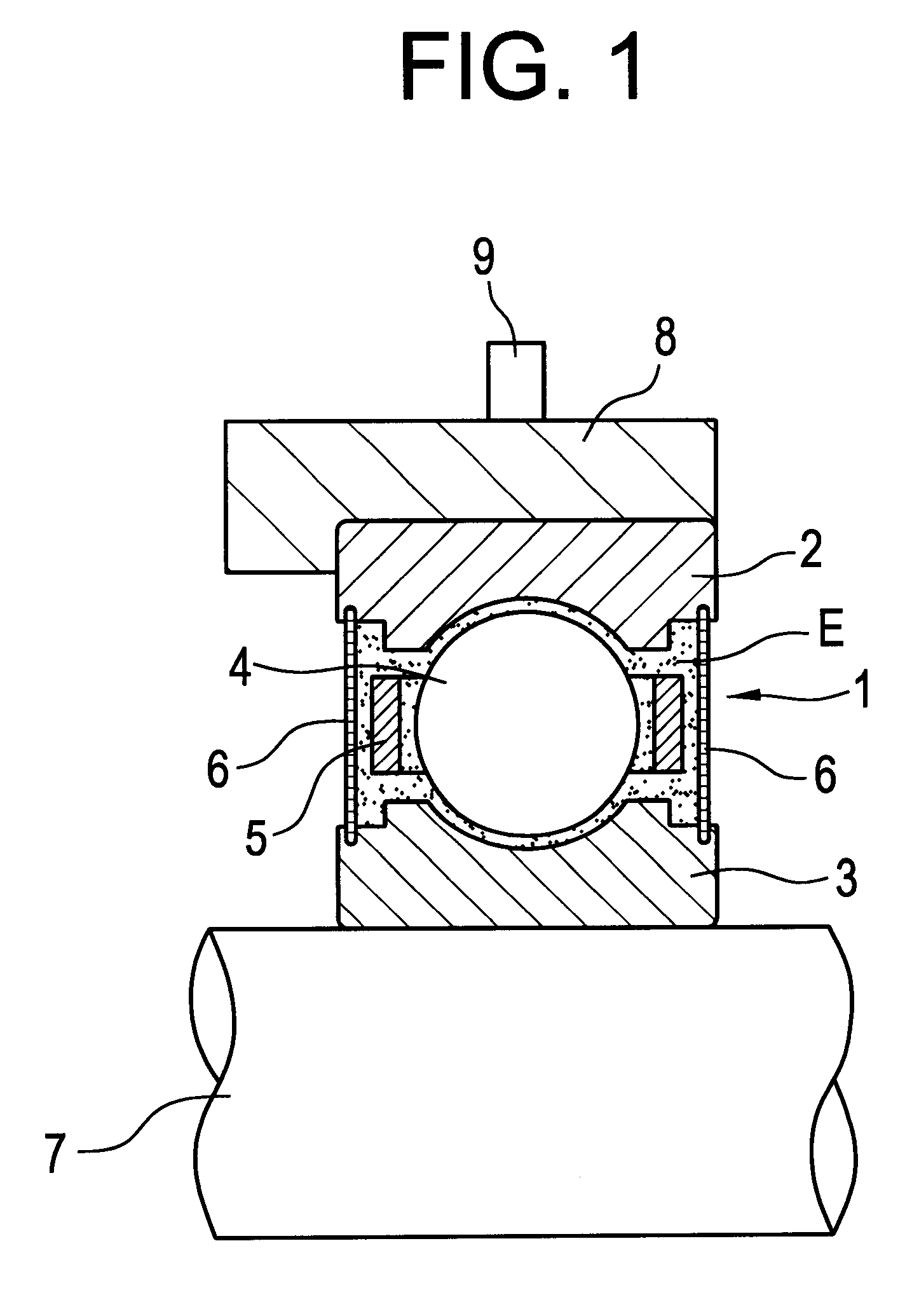Rolling bearing
- Summary
- Abstract
- Description
- Claims
- Application Information
AI Technical Summary
Benefits of technology
Problems solved by technology
Method used
Image
Examples
second embodiment
implication of the present invention will be described hereinafter.
For the life test on the rolling bearings of Examples 11 to 13 and Comparative Examples 11 to 13, the inner races and outer races were prepared from the materials set forth in Table 3.
For the bearing races other than that of Comparative Example 11, the materials were each subjected to ordinary heat treatment, i.e., thermal hardening at a temperature of from 1,000.degree. C. to 1,150.degree. C., sub-zero treatment, and then tempering at a temperature of 160.degree. C. For the bearing race of Comparative Example 11, the material, which is SUJ2, was subjected to thermal hardening at a temperature of 850.degree. C. and then tempering at a temperature of 180.degree. C. to have a surface hardness HRC of from 58 to 64, a surface roughness of from 0.01 to 0.04 .mu.mRa and a retained austenite (.gamma.R) content of from 6 to 12%.
For all the rolling elements of Examples 11 to 13 and Comparative Examples 11 to 13, SUJ2 was used...
example 11c
with a grease comprising a urea-based thickening agent containing 50% of an ether oil incorporated therein. Therefore, under lubrication with a grease mixed with 5% of water, metallic contact occurred easily. Accordingly, the bearing of Example 11C underwent flaking on the outer race at a ratio of 2 / 10 and showed a L.sub.10 life of 912 hours, which is twice that of Comparative Examples 11D and 11E described later.
On the other hand, Comparative Example 11D was a test made with a grease comprising a urea-based thickening agent containing 40% of an ether oil incorporated therein. Therefore, under lubrication with a grease mixed with 5% of water, local metallic contact occurred frequently, deteriorating the roughness of the race surface in the vicinity of the maximum load zone to 0.09 .mu.mRa. As a result, the passive film having a thickness of 35 nm was locally observed to have been destroyed. Accordingly, the bearing of Comparative Example 11D underwent flaking on the outer race at a ...
PUM
| Property | Measurement | Unit |
|---|---|---|
| Length | aaaaa | aaaaa |
| Fraction | aaaaa | aaaaa |
| Percent by mass | aaaaa | aaaaa |
Abstract
Description
Claims
Application Information
 Login to View More
Login to View More - R&D
- Intellectual Property
- Life Sciences
- Materials
- Tech Scout
- Unparalleled Data Quality
- Higher Quality Content
- 60% Fewer Hallucinations
Browse by: Latest US Patents, China's latest patents, Technical Efficacy Thesaurus, Application Domain, Technology Topic, Popular Technical Reports.
© 2025 PatSnap. All rights reserved.Legal|Privacy policy|Modern Slavery Act Transparency Statement|Sitemap|About US| Contact US: help@patsnap.com


